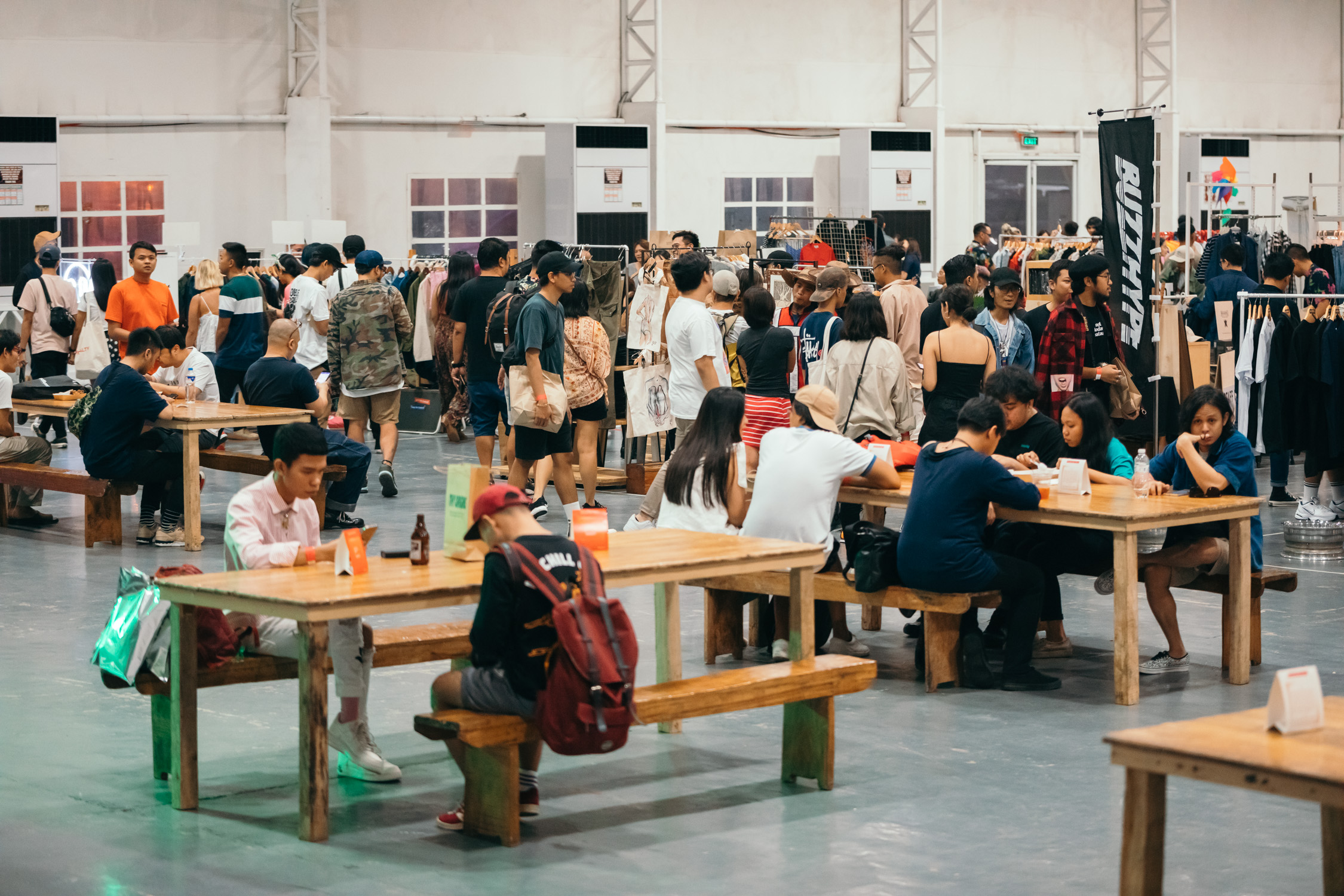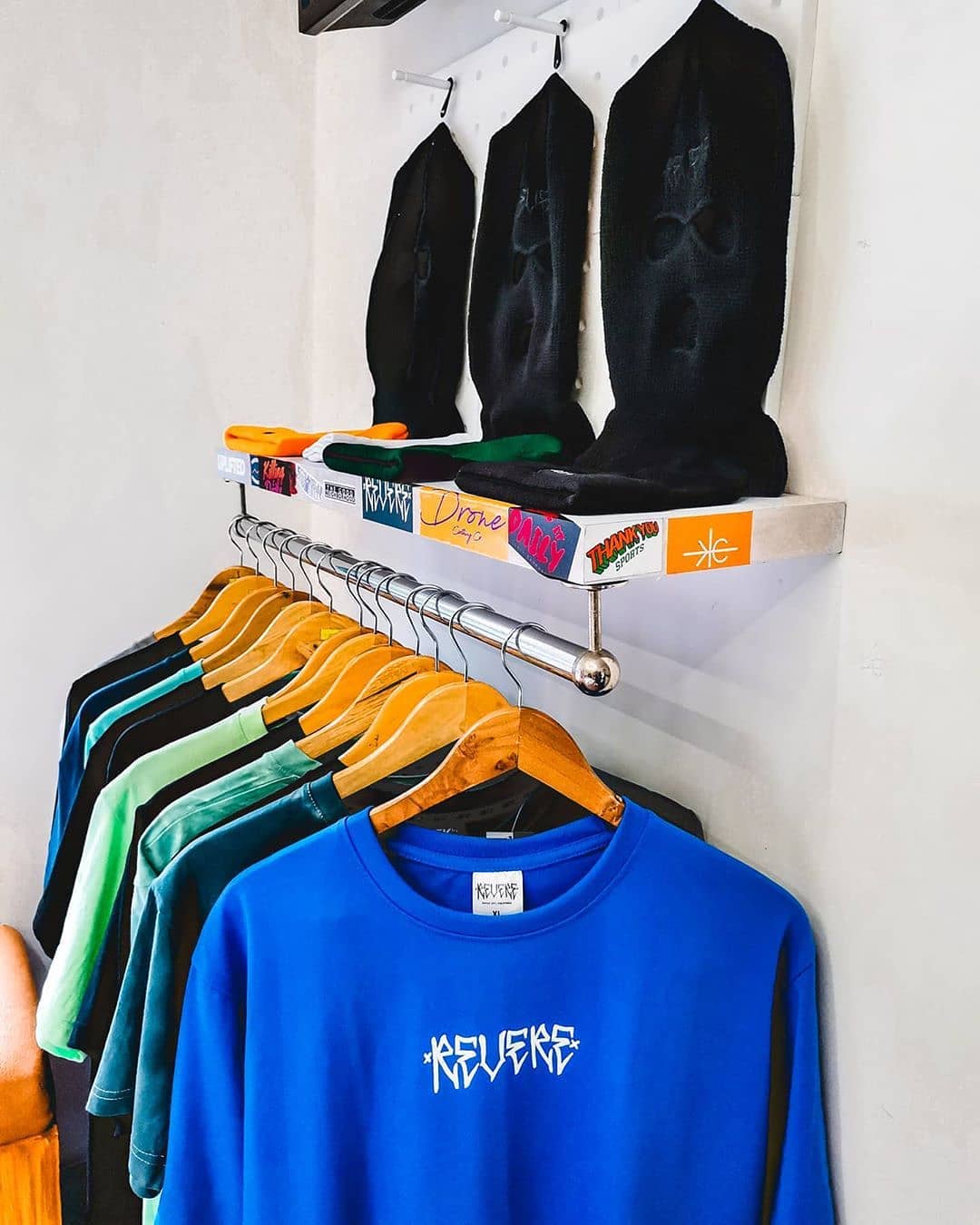
How do Filipino fashion brands persevere through a pandemic?
With stores still unable to open, local fashion brands face the challenge of building rapport with consumers from a distance.
By Andrea Michaela
October 20, 2021
We’re approaching our second Christmas season under the pandemic and stability feels as tenuous as it did in 2020, especially for the Filipino fashion community.
Small brands once thrived on physical events during this time of the year. One of the biggest events in independent fashion was PURVEYR’s Pursuit Fair, held bi-annualy during the summer and holiday season. Their largest installment in November 2018 attracted 1,500 guests and showcased 72 independent brands.

“The highlight of running a brand was getting to know our customers face-to-face at events and pop-ups,” shares Tomorrow co-founder Andrew Panopio, whose brand was a regular fixture at Pursuit Fair when they weren’t organizing their own pop-ups. To Panopio, being a brand in a physical space was about “schmoozing [customers] to purchase that shirt that's a little too big for them.” These days, the uncertainty of the market can really drain one’s motivation, he says.

“The only way to continue was to pivot to compete online. We strive to put our best foot forward at all touchpoints and stay visible,” Panopio continues. Before the pandemic, e-commerce was a mainstay for local fashion, and now it’s even more popular than ever. As social media platforms morph into algorithmically-driven marketplaces, brands get the fighting chance to attract new customers by taking advantage of tagging and resharing features. It is for these same reasons that Instagram in particular has become a formidable online shopping platform, especially for small businesses.
“Instagram is a wonderful place for people to dig deep into what they love. The UX is not as distracted as Facebook or Twitter [and] this especially goes for clothes,” Panopio continues. He believes the platform serves as a great catalogue for interested buyers, acquainting Tomorrow with consumer style trends, and it pushes them to keep up with the players they are up against. Some brands completely forego the online store and keep their catalogs on the app, allowing for unique purchasing formats such as bidding and dibs systems. In Tomorrow’s case, they utilized the latter while selling one-of-a-kind pieces from a collaborative collection with fellow indie brand RIOTASO. This added another level of intimacy with the customer, and was reflective of the spirit of the collection itself.
Yet, for all the benefits that e-commerce and social media can provide, there are certainly limits to how much it can replace missing elements from the local fashion industry. While Instagram enables collaborations and cultural overlaps in many ways, its community-building features can feel stunted. There are no message boards, group pages, or forums on the app. Ultimately, the design of its user experience emphasizes individual profiles and curated feeds above all. While you can chat up a customer through direct messages, there’s little that can actually replace the feel of a face-to-face interaction.

“It's fun to run a store. You meet people, you converse and connect with them. My most recent encounter was with a mom buying a gift for her son. We had a very pleasant chit-chat about her son's activities and their hobbies. It grounds you, makes the brand more human” says French Andico, founder of Davao-based clothing brand Revere. French was running his brand exclusively as an online store before establishing their brick-and-mortar in his home province. Since then, the brand became notable for the community they fostered among skaters, underground musicians, and visual artists in Davao City through their space and activations.
Womenswear designer Sassa Jimenez shares a similar sentiment, “I think having a physical retail space is not going to be important for every brand, but there are some brands that would benefit from having a curated space that simulates the kind of lifestyle they are selling. It’s also nice for customers to be able to enter your world physically. It’s human nature to want to be surrounded by something they love.”
Whether a brand opts to maintain a physical space or push the envelope online, one thing remains important: keeping the industry alive. “The garment industry and local artisans like sewers, beaders, embroiderers, weavers etc. are the backbone of our businesses. It will be very hard to keep fashion alive if we lose our resources for labor or materials.”
Changes in lockdown restrictions, technological capacities, and marketing trends are just among the many things local designers and business-owners have to weather to keep heads above water.
Something to consider this gift-giving season, a “before-you-buy,” if you will.



